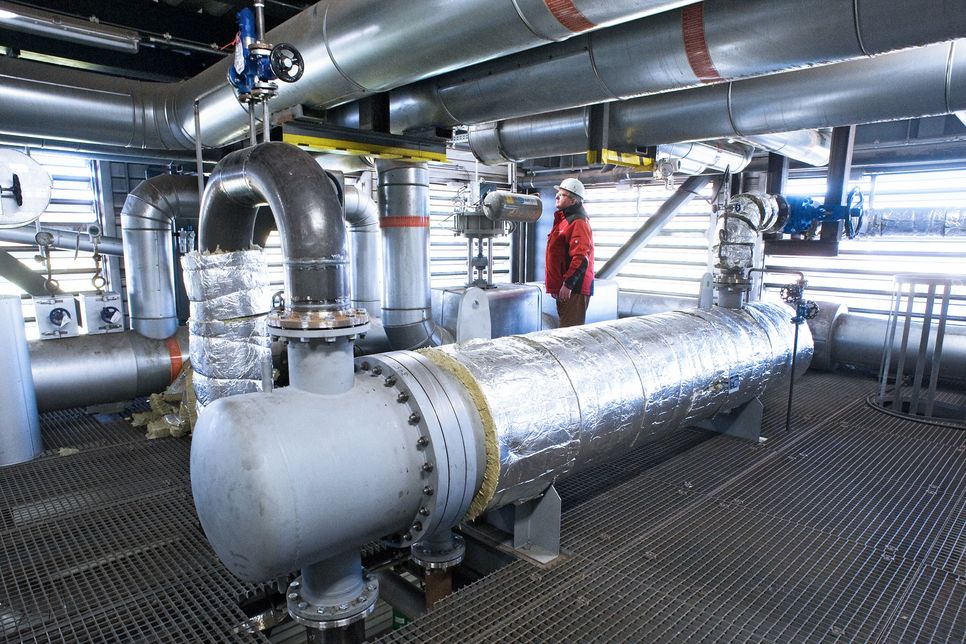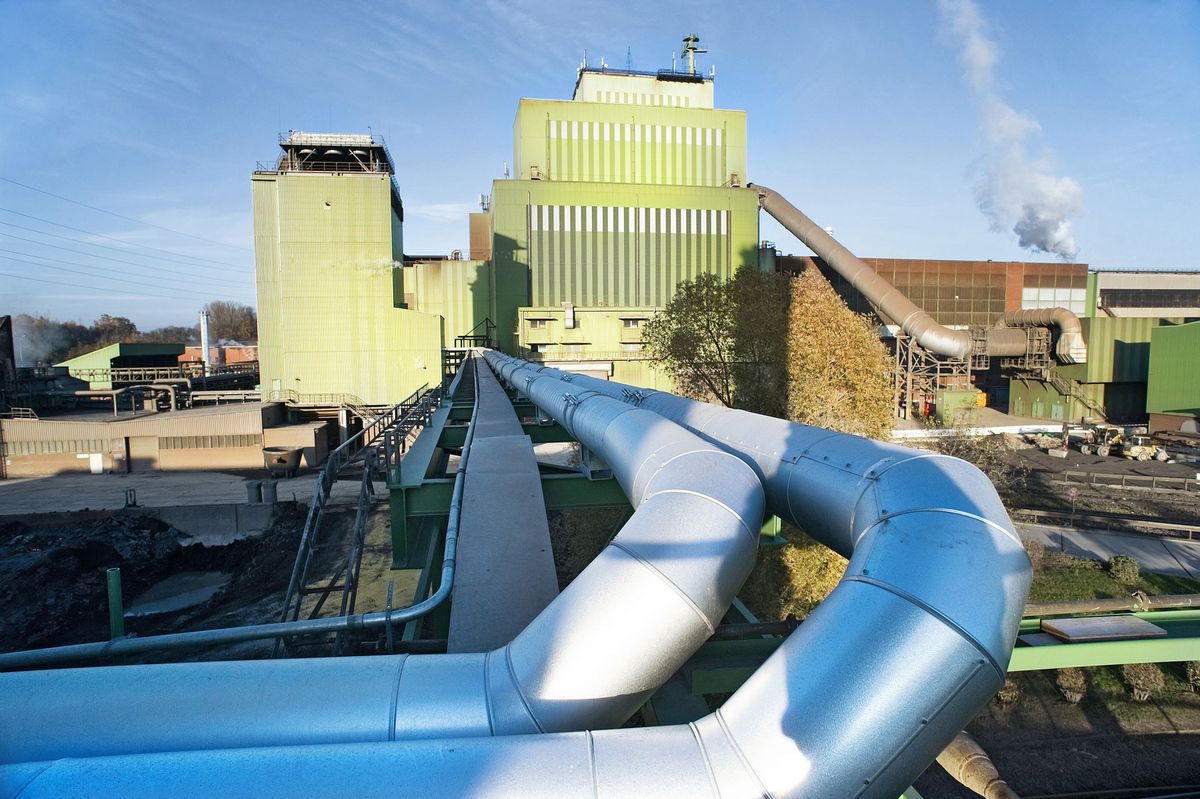
Utilisation of waste heat in the steel industry
Steel is 100% recyclable. But that’s not all. Efficient utilisation of the waste heat yielded in the production and processing of steel saves many tonnes of emissions every year in the GMH group’s plants. Here two examples from the Georgsmarienhütte GmbH steel mill and the Gröditz forging plants.
The steel industry is one of Germany’s most energy-intensive industries. Energy is necessarily used in industrial processes such as the production of crude steel and in forging. Using the minimum possible energy is, for this reason, also the top-priority aim at our facilities in Georgsmarienhütte and Gröditz.
Over and above this, we also further refine our technologies in order to utilise the waste heat, the generation of which cannot be avoided, as efficiently as possible. We use this waste heat, for example, in our own production and also feed surplus process heat into the regional district heating system.
Energy-efficiency thanks to utilisation of waste heat
- Use of waste heat in our own steel production
- Use for heating of our buildings and for the preparation of hot water
- Feed of heat into the regional district heating system
Utilisation of waste heat at Georgsmarienhütte
Energy-efficiency in the steel industry – this is symbolised by the more than 1500 tonnes of CO2 that our steel mill in Georgsmarienhütte saves every year. We eliminate this quantity of harmful emissions there by feeding the waste heat from steel production into the municipal utilities’ district heating system. The heat from the steel mill is used to heat residential and public buildings in the town of Georgsmarienhütte. This makes use of a significant heat potential in the Osnabrück Land region, as well as an important contribution to climate protection.

1500 tonnes of CO2 saved
Simply by feeding waste heat into the Georgsmarienhütte municipal utilities’ district heating system.
In Gröditz, the GMH group’s forging facilities have been supplying a major portion of the district heating needed in Gröditz during the summer months since as long ago as 2004. In wintertime, the waste heat from the forging furnaces is used primarily to heat buildings on the plant site. So: whether for the town or for our own purposes – in both cases, our use of waste heat benefits the climate.
The most efficient possible use of waste heat has also long been an important subject at Georgsmarienhütte. Even before feed-in to the municipal utilities’ district heating system started, around 50% of the industrial waste heat from steel production was used for downstream production processes. More valuable energy is re-used for the heating of plant shops, administrative buildings and for the generation of hot water.
Waste heat – a beacon project
The project in Georgsmarienhütte has already been acknowledged as a “Beacon of energy-efficient utilisation of waste heat” by the German Energy Agency (usually abbreviated to “dena”). Ultimately, the use of waste heat conserves conventional fossil energy sources such as natural gas, and also other economic resources. For heat customers and future users in new development areas of Georgsmarienhütte, “a great, climate-neutral potential, thanks to possible expansions of the district heating system” results, as Jörg Dorroch, CEO at the Georgsmarienhütte municipal utilities, affirms.
District heating from the steel mill is, furthermore, a dependable supplier of energy. Waste heat from production is, it is true, available only with fluctuations. Nonetheless, a high-capacity heat storage facility, which is capable of absorbing and storing 11 MW of waste heat in only 15 minutes, assures stable supplies of energy. This facility is used to meet peak loads in winter. In addition, it assures load-decoupled operation of the high-efficiency combined heat+power (CHP) plant also installed.
Energy-efficiency in the steel industry
Provisions like those made by Georgsmarienhütte GmbH and Schmiedewerke Gröditz result in a greater energy-efficiency, which is capable of initiating great changes in the steel industry, in particular. The conservation of energy resources will therefore also remain an important topic in the future.
In Gröditz, for example, work is currently going on for the renewal of three heat-treatment furnaces, in order to uprate the energy-efficiency of the forging processes to the latest state-of-the-art. A challenge which is also being tackled at Georgsmarienhütte. “Part of our waste heat still remains unused”, notes Reimund Laermann, Energy Management director at Georgsmarienhütte GmbH. For this reason, he and his team continue to work on further reducing this unused percentage.